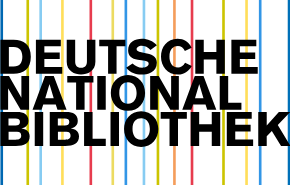PAREMIOLOGICAL UNITS FORMED IN THE LEXICON OF APHORISMS AND ISSUES OF THEIR TRANSLATION
DOI:
https://doi.org/10.55640/Keywords:
paremiological units, aphorisms, translation strategies, cultural adaptation, figurative language, rhetorical effect, linguistic economy.Abstract
This article investigates paremiological units derived from the lexicon of aphorisms and examines the challenges involved in their translation across languages, with particular attention to English–Uzbek language pairs. Aphorisms, as concise and often metaphorical expressions of universal truths or philosophical reflections, possess distinctive linguistic and cultural features that complicate direct translation. The study identifies structural, semantic, and pragmatic aspects of aphorism-based paremiological units and analyzes how cultural specificity, figurative language, and stylistic economy influence their interpretation in the target language. Comparative and descriptive methods are applied to explore translation strategies that maintain both semantic fidelity and rhetorical effect. The findings underscore the need for creative adaptation and culturally informed decision-making to preserve the intended impact of aphorisms in translation.
References
1.Abdullayeva, D. (2021). Tilshunoslikda aforizmlar va ularning tarjima jarayonidagi xususiyatlari [Aphorisms in linguistics and their features in translation]. O‘zbek tili va adabiyoti, 5(3), 42–49.
2.Ahmedov, M. (2020). O‘zbek va ingliz tillarida qisqa shaklli hikmatli birliklarning semantik-pragmatik tahlili. Filologiya masalalari, 4(2), 73–81.
3.Akhmedova, G. T. (2019). Cultural adaptation in translating aphorisms: A comparative approach. Journal of Foreign Language Education and Translation Studies, 3(1), 55–64.
4.Bazarova, N. (2022). Paremiologik birliklar tarjimasida kontekst va madaniy kodlar roli. Til va tarjima, 2(4), 88–96.
5.Dobrovol’skij, D. O., & Piirainen, E. (2018). Figurative language: Cross-cultural and cross-linguistic perspectives. Cambridge University Press.
6.Karakulov, S. (2023). Aforizm va maqollar tarjimasida ekvivalentlik masalalari [Equivalence issues in translating aphorisms and proverbs]. Jahon tillari va adabiyoti, 7(1), 15–23.
7.Mieder, W. (2019). Right makes might: Proverbs and aphorisms in politics, literature, and everyday life. Peter Lang Publishing.
8.Nazarova, M. (2017). Ingliz va o‘zbek tillarida hikmatli so‘zlarning lingvokulturologik tadqiqi. O‘zbekistonda lingvistika va tarjima masalalari, 1(1), 103–111.
9.Paksoy, M. (2021). Aphorisms in literary discourse and their translation problems. International Journal of Language and Literature, 9(2), 66–74.
10.Xolmatova, S. (2018). Tarjima nazariyasida qisqa shaklli hikmatli iboralarni o‘rganishning dolzarb masalalari. Filologiya ilmiy tadqiqotlari jurnali, 2(5), 59–65.
Downloads
Published
Issue
Section
License

This work is licensed under a Creative Commons Attribution 4.0 International License.
Authors retain the copyright of their manuscripts, and all Open Access articles are disseminated under the terms of the Creative Commons Attribution License 4.0 (CC-BY), which licenses unrestricted use, distribution, and reproduction in any medium, provided that the original work is appropriately cited. The use of general descriptive names, trade names, trademarks, and so forth in this publication, even if not specifically identified, does not imply that these names are not protected by the relevant laws and regulations.







